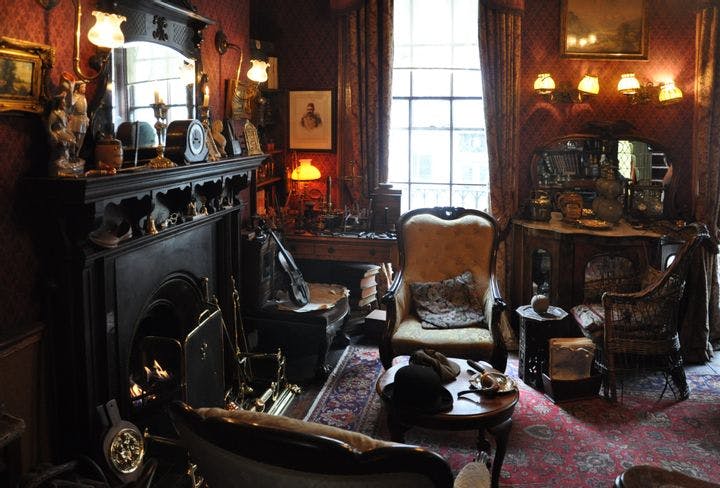Spring 2010
The Cure That Killed
– Colin Fleming
How the practical uses of arsenic in daily Victorian life led to thousands of accidental poisonings.
Arsenic gained its foot-hold in the imagination of 19th-century Britons as the go-to poison for murderers, figuring in many a Victorian potboiler. Though its primary purpose was to control the nation’s burgeoning rat population, arsenic—a mining industry byproduct—looked an awful lot like household flour. It killed no more people than cholera or smallpox, yet it was a sensation in the medical reports and penny rags of the time. It turns victims the color of copper, scales their skin, and may cause such sensory overload that they can barely endure the touch of a finger. A single dose of as little as 300 milligrams (a mere hundredth of an ounce) can cause death within 24 hours, but even smaller quantities, repeatedly ingested, prove lethal over days or weeks.
James C. Whorton, a University of Washington professor of medical history, diligently recites the grim statistics—a third of all 19th-century British poisoning cases involved arsenic—but his narrative really gets going when he focuses on the utilitarian presence of arsenic in daily Victorian life that led to so many accidental poisonings. Arsenic was an able traveler, and readily mixed with barleys, grains, and a host of foodstuffs. A chap could poison himself at the local pub with a dram of what became known as arsenical beer, the hoppy killer. Whorton offers the tale of a two- year- old child who sipped from a bad batch, setting an impressively young standard for victimhood—and another for bad parenting—which is eclipsed several pages later with the revelation that infants were poisoned by tainted breast milk, a direct result of their mothers drinking tainted beer. Victorian England was a Doctor Spock–free zone.
Part of the problem with arsenic was its dual identity. It was not only an agent of murder, but a component of standard household items such as writing materials and gift wrap. It formed the basis of the pigment that colored the wrappers of sweets, and the dye in the paint that made little Billy’s hobby horse glow all the brighter. Toy manufacturers were especially liberal in their use of arsenical paints. “Often the colors were only loosely applied and were easily removed by one of a young child’s favorite activities, sucking,” Whorton writes. “The wrapping on ‘an ordinary sized cracker- box,’ it was found, contained nearly 50 grains of arsenic”—hardly a benign quantity. Many children die in the pages of The Arsenic Century. So do their parents, given that arsenic could be unknowingly mixed up with various ingredients and cooked right into dinner.
If Britons somehow survived the hobby horse, the pub, and the dinner dumplings, their doctors could still do them in. Staffordshire physician Thomas Fowler touted arsenic as a cure- all, something so bad it had to be good—much as radiation would later come to be regarded—only it lacked any beneficent effects. In discussing the Fowler saga, Whorton gives The Arsenic Century the feel—and the efficiency—of a Wilkie Collins or Arthur Conan Doyle novel, bringing science to bear on then-popular culture. Fowler’s book Medical Reports of the Effects of Arsenic was enough of a hit that other physicians were soon espousing the alleged benefits of arsenic. Some advised eating it, and a few willing patients did so, claiming it boosted sexual power, before dying horrible deaths.
The Arsenic Century isn't meant to be an overt cautionary tale, but it does offer a sage warning for the present era. Given the rate with which new chemicals are introduced into work and home environments each year—often, as with arsenic, before their potential repercussions are fully grasped—we might well bear in mind the lesson of Victorian England’s pernicious killer.
* * *
Colin Fleming, who is based in Boston, has written for publications including Rolling Stone, Slate, and The New Yorker. He is at work on a short-story collection and a novel.
Reviewed: "The Arsenic Century: How Victorian Britain Was Poisoned at Home, Work, and Play" by James C. Whorton, Oxford University Press, 2010.
Photo courtesy of Wikimedia Commons
